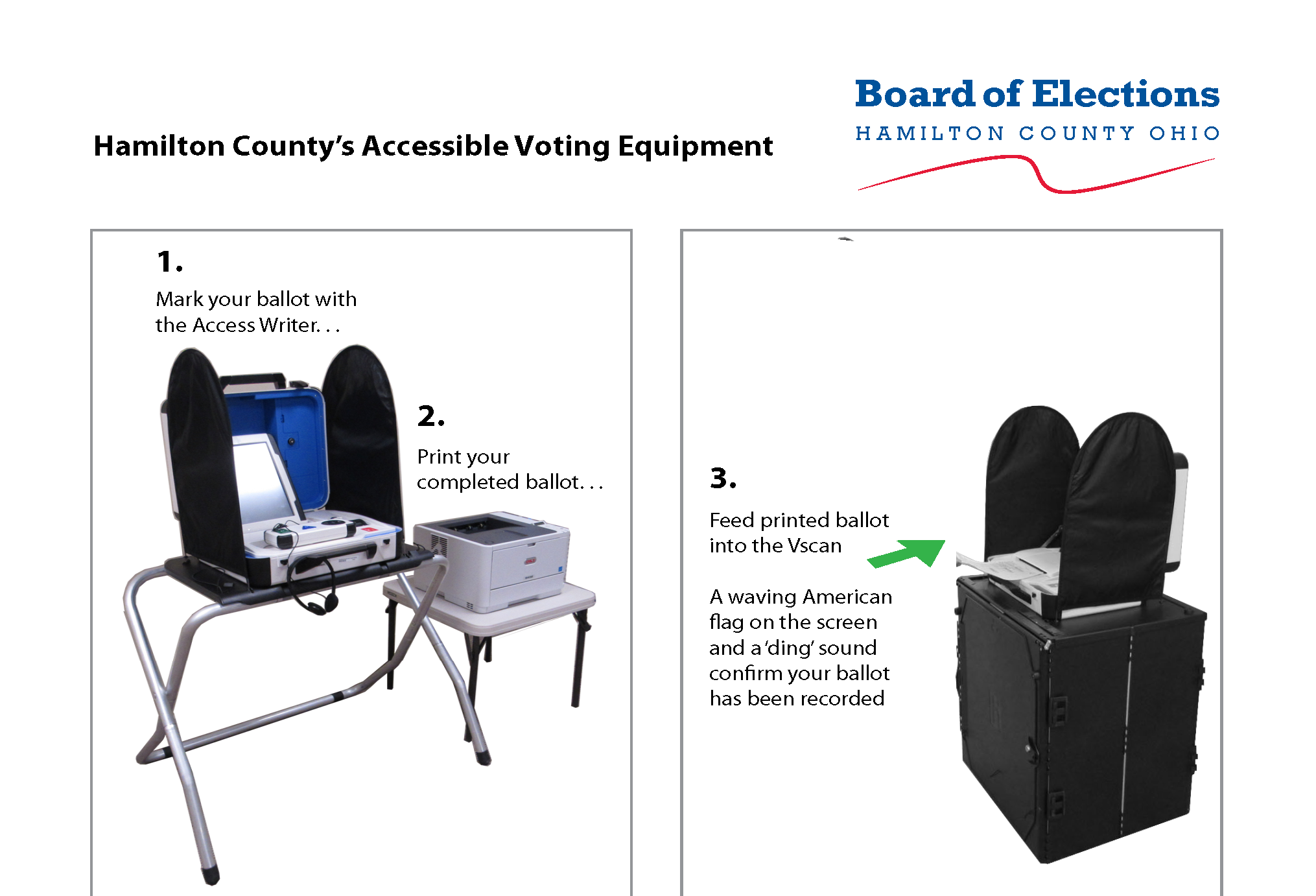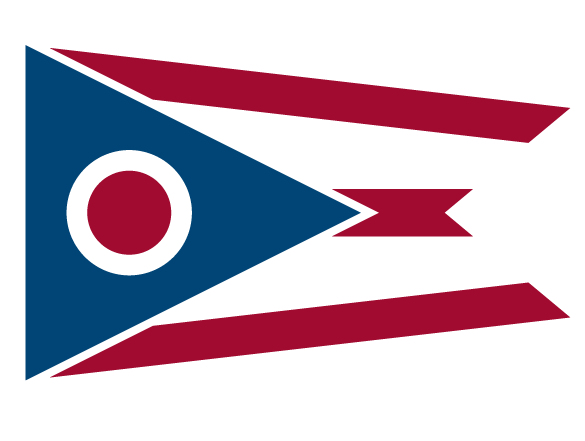Accessibility for all voters is central to our mission, ensuring every eligible citizen can participate in elections without barriers. We strive to enhance voting processes and facilities for individuals with diverse needs. Our team implements accessible voting machines, offers voter assistance, and ensures polling places comply with the ADA, providing resources in various formats to support all voters.
This is an excellent option for voters as it enables you to cast your vote from the comfort of your own home. Simply complete our vote-by-mail request form (accessible at this link: votehamiltoncountyohio.gov/voting-options-2/mail/) and we will mail you a ballot! Once filled out, just return it to us, by mail, in person, or in our 24 hour Dropbox. A voter with a disability may select any person of their choosing to deliver their ballot, other than their employer, or an officer in their union. The person delivering the ballot must complete an attestation form at the county Board of Elections office (Form 12-P).
Voting Remotely
A voter with a qualifying disability under the Americans with Disabilities Act may vote remotely using the Board of Elections’ remote ballot marking system. Complete the application below and return to the BOE.
Click this link to download the Application for Voter with Disability & Request to Use Remote Ballot Marking System (11-G): votehamiltoncountyohio.gov/wp-content/uploads/2025/03/11-G_2025-03.pdf
Voter Process:
- Complete an 11-G Application for access to the remote Absentee ballot. (Voter must provide email address)
- Voter will receive an email from the BOE with a link to their remote AV ballot along with the 12-N ballot instructions with the 12-A Identification envelope and return envelope. (BOE will also send envelopes by mail)
- Once the ballot is completed, a voter must print the ballot and return the ballot to the BOE by mail or in our 24-hour drop box.
Voter requirements:
-
- Computer
- Printer
- Internet access
- Email address
- Screen reader software or a sip and puff device
- Operating System – older computers that do not support new windows may not support the system.
Early in-person voting offers significant benefits for voters by providing more time and flexibility, and reduces the pressure of crowded Election Day polling stations. This proactive approach helps prevent potential barriers that could arise on Election Day, ensuring that voters have the opportunity to participate in the democratic process without unnecessary stress or delays. Visit the current election page for our early vote hours!
Election Day voters can also make use of our voting resources listed below! Visit our “Voting on Election Day” page to learn more about what to expect on Election Day at this link: votehamiltoncountyohio.gov/voting-options-2/election-day
See below for voting assistance that is available when voting Early In Person or on Election Day.
-
- Want to vote alone? You can request to use the ADA Ballot Marking Device. Each polling location has one ADA ballot-marking device for voters who need assistance marking their ballot. This unit, called the AccessWriter, offers functions such as audio ballots, Braille and tactile lettering, touch screen or push-button navigation, and more.
- You can bring someone with you to the polls to help, as long as it is not your employer or an agent of your employer, an agent of your union, or a candidate that is running for office. No one who assists can tell a voter how to vote or disclose any information about how that person voted.
- Voters can request a bipartisan Poll Worker (PEO) team to read aloud and mark the Ballot for you. No one who assists can tell a voter how to vote or disclose any information about how that person voted.
- Curbside voting is an option for a voter with a disability who is physically unable to enter a polling location. They can send another person into the polling location to inform the Poll Workers that there is a voter who needs to vote curbside. If the voter is not accompanied by another person, they can call (513) 946-8500 for assistance. Once alerted that a voter wants to vote curbside, two Poll Workers of opposite major political parties will process the voter from their vehicle.

Service animals are welcome at the Polls, emotional support animals are not.
Access Writer Ballot Marking Device Video
Learn more about how you can use our Access Writer to help you mark your ballot.
Did you know that every two years, we survey every polling location to ensure that all our polling locations meet ADA compliance!
